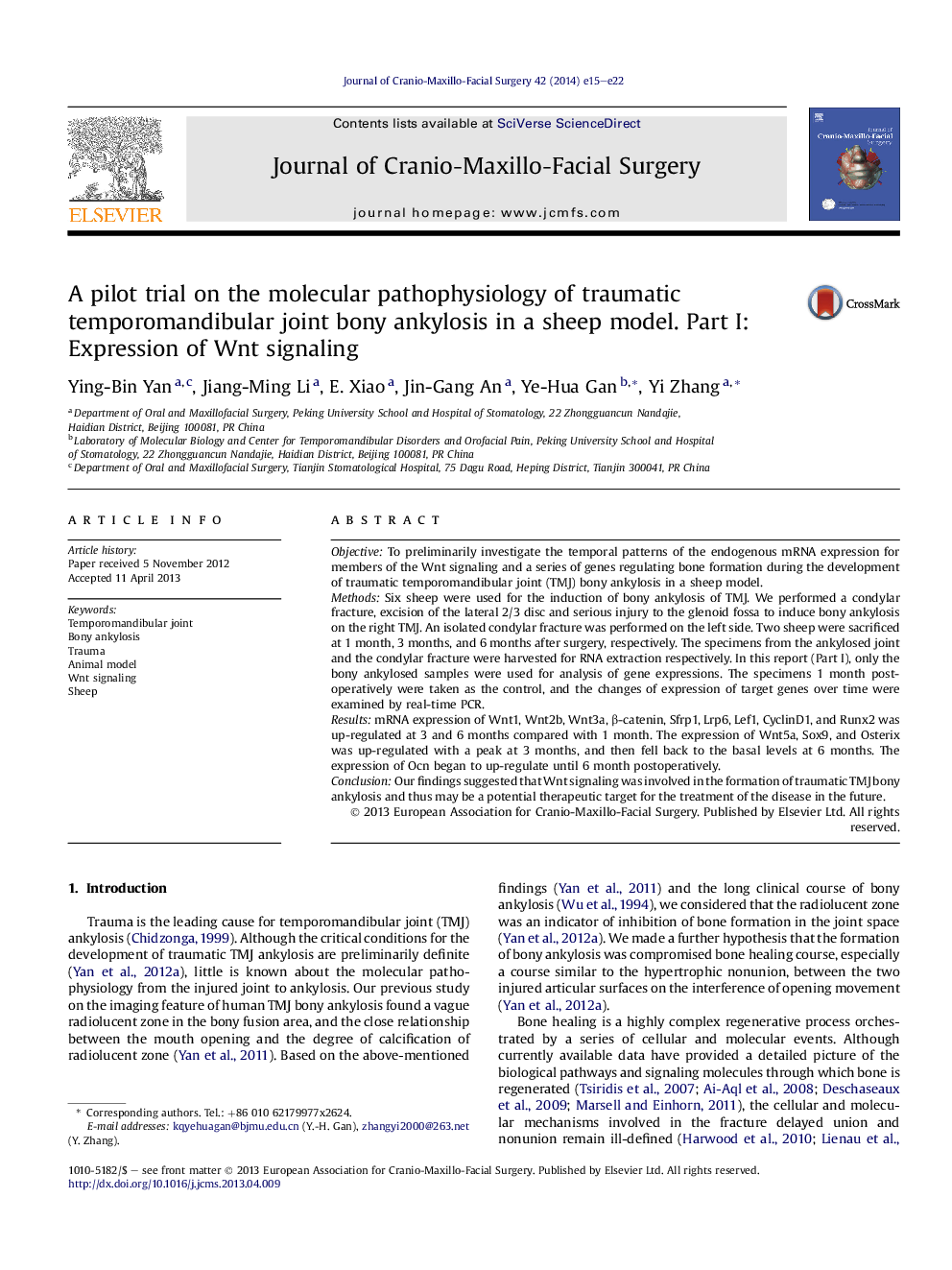| Article ID | Journal | Published Year | Pages | File Type |
|---|---|---|---|---|
| 3142926 | Journal of Cranio-Maxillofacial Surgery | 2014 | 8 Pages |
ObjectiveTo preliminarily investigate the temporal patterns of the endogenous mRNA expression for members of the Wnt signaling and a series of genes regulating bone formation during the development of traumatic temporomandibular joint (TMJ) bony ankylosis in a sheep model.MethodsSix sheep were used for the induction of bony ankylosis of TMJ. We performed a condylar fracture, excision of the lateral 2/3 disc and serious injury to the glenoid fossa to induce bony ankylosis on the right TMJ. An isolated condylar fracture was performed on the left side. Two sheep were sacrificed at 1 month, 3 months, and 6 months after surgery, respectively. The specimens from the ankylosed joint and the condylar fracture were harvested for RNA extraction respectively. In this report (Part I), only the bony ankylosed samples were used for analysis of gene expressions. The specimens 1 month postoperatively were taken as the control, and the changes of expression of target genes over time were examined by real-time PCR.ResultsmRNA expression of Wnt1, Wnt2b, Wnt3a, β-catenin, Sfrp1, Lrp6, Lef1, CyclinD1, and Runx2 was up-regulated at 3 and 6 months compared with 1 month. The expression of Wnt5a, Sox9, and Osterix was up-regulated with a peak at 3 months, and then fell back to the basal levels at 6 months. The expression of Ocn began to up-regulate until 6 month postoperatively.ConclusionOur findings suggested that Wnt signaling was involved in the formation of traumatic TMJ bony ankylosis and thus may be a potential therapeutic target for the treatment of the disease in the future.
